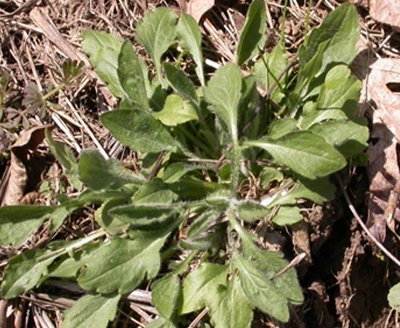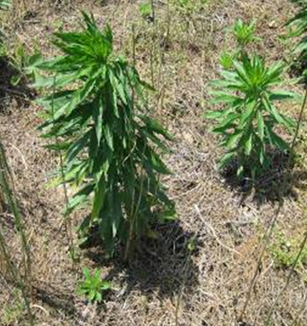
- Fall-applied herbicides help manage tough-to-control weeds like marestail.
- Earlier spring operations can be attributed to a fall application of herbicide as soil temperatures warm and dry faster when weed vegetation is eliminated.
- Winter annual weeds like henbit and purple deadnettle can be a host to the soybean cyst nematode.
- The use of a residual herbicide when applied in early fall will help mitigate any additional emerging weeds later in the season.
The increasing prevalence of fall herbicide applications for control of winter annual weeds may indicate that growers are becoming more aware of the benefits that these applications provide. Fall-application of herbicides may be the most effective timing to control a number of annual and perennial weeds, including some of our hard-to-manage herbicide-resistant weeds. Fields where weeds are managed in the fall are often the most weed free in the spring. Elimination of weed growth in the fall allows the soil to dry out and warm up more rapidly, and ultimately permits earlier spring operations and planting.
Good winter annual weed control can also provide additional benefits as it relates to insect, disease, and rodent populations. Insects, such as black cutworms, are often less attracted to fields without vegetative growth. It is also known that at least six winter annual weeds, including purple deadnettle and henbit, are a host for soybean cyst nematode. Furthermore, because of lack of vegetative cover, voles are less likely to invade weed free fields.
When choosing a fall herbicide program, the weed spectrum must be considered. For control of perennial weeds, such as dandelion, the best time for management is in the fall. In this case, application of a combination of glyphosate + 2,4-D should suffice.This combination will also provide adequate control of many winter annual weeds that are emerged. The use of 2,4-D in combination with dicamba is also a good option for fields that contain only broadleaf species. However, the lack of an adequate residual component with these programs will allow for additional weed emergence if the application is made early in the season.

For early fall applications, the use of a residual herbicide is necessary to manage additional weeds that germinate later in the season.Also, the use of a residual herbicide when glyphosate-resistant marestail is present will help provide fall and early spring control for those late emerging plants. Control of this weed species at germination or as a rosette in the fall is much more effective than spring burndown applications after the marestail bolts. The potential downside of using a fall residual herbicide is reduced rotational flexibility. Many herbicides are labeled for use in both corn and soybeans for the following season, while some are specific to a single crop.
Finally, it is important to remember that fall herbicide applications are not a substitute for spring residual herbicide applications. Best management practices for controlling summer annual weeds, including glyphosate-resistant waterhemp, incorporate spring residual herbicide applications followed by in-crop applications.
Image 1: Marestail Rosette
Image 2: Bolted Marestail